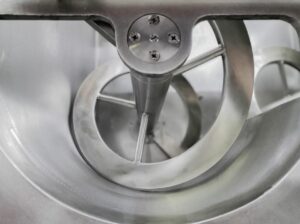While the Covid pandemic took its toll on sales, the cosmetics industry is still something of a powerhouse with a global market size of nearly $278 billion according to Fortune Business Insights. Women across the world, to say nothing of stage and film productions, use cosmetics every day. There’s also a growing number of men purchasing cosmetics.
What isn’t as clear is what manufacturing looks like in the cosmetic industry. If you’ve ever wondered how those cosmetics get made, keep reading.
Materials
The process starts with raw materials. Some of the more common ingredients in makeup include oils, waxes, dyes, plants, and minerals. Oils and waxes make applying cosmetics easier, while minerals, dyes, and plants typically provide color for the makeup. The manufacturer will put raw materials through a disinfection process.
Screening
After the disinfection process, the raw materials go through a screening process to test for contaminants and microorganisms. This helps ensure that the final product will meet safety regulations put out by governmental bodies, such as the FDA in the US. Once the material clears the screening process, they move on to the mixing process.
Mixing
The mixing process varies depending on the intended final process. In general, though, the raw materials will go into a mixing machine, such as double cone blenders. For examples of these mixers, you can go to this website, and see what they look like. The mix blend will help create different variations in color and texture. Manufacturers often add small amounts of perfume scents to products to help mask the raw material smells.
The manufacturer will normally add an emulsifier at this point. In simplest terms, an emulsifier helps bond together ingredients that wouldn’t normally mix together well. The most common example is a water and oil mix, such as you might find in a lotion or even a skin cream.
Filtering, Quality Control, and Packaging
After the mixing process, the cosmetic will go through a filtering process to remove any lingering clumped materials and ensure consistency. The product can then go through a quality control check. Quality control will examine everything from the texture of the product to its color and smell.
Assuming the batch passes quality control, it can go into an appropriate package, such as a bottle or lipstick tube. The manufacturer can then ship the finished products out to distributors or retail outlets.
The manufacturing process in the cosmetics industry requires a blend of technical know-how and creativity. While anyone can theoretically buy the right equipment and ingredients, it takes a bit of science to bind those ingredients for the right finished product. It takes some creativity to blend those ingredients for pleasing scents and colors.

